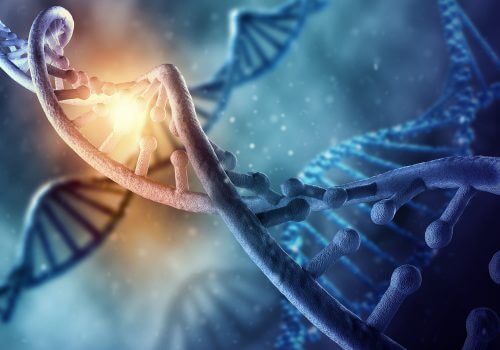Researchers from the Hebrew University and "Magil" University in Canada have revealed a new phenomenon - the formation of 'bands of genes' that may teach about the appearance of hereditary breast cancer in the human body. According to them, understanding this phenomenon and studying those bands may help cancer patients in early diagnosis, adjusting medications for patients and even preventing the disease

Ever since Richard Dawkins published his book "The Selfish Gene" (The Selfish Gene) in 1976 and until today, the common perception is that genes like to be individual, soloists, interested above all in eternal life when people and animal species are considered to them as mere tools in their survival journey. The genes are therefore forced to take a competitive approach when meeting with other genes in the pursuit of survival. Not all genes emerge unscathed from the same competition, some evolve while others are forced to change or become extinct depending on the environmental circumstances.
A new international study published in the scientific journal "Genome Research" and carried out by a team from Israel and Magill University (Canada), led by Dr. Yuval Tabah, Dr. Dana Shiril-Ropa and Dolev Rahat from the Israel-Canada Medical Research Institute at the Hebrew University, reveals Because this is not always the case and he discovered a new phenomenon that goes by the name "garden bands". According to Dr. Tabah, genes with common functions work together as a group in evolution and are able to win or lose together in their struggle for survival.
Following the unprecedented revolution in genomics in recent years, researchers have been able to analyze the genomes of no less than 600 animals, plants and fungi. To their surprise, a very dynamic behavior of those "garden bands" was discovered. Throughout the evolution, the genes gathered into groups that work for a common goal, new genes managed to work with the same groups and join them, some left the groups and there were some that broke up. Through computational analysis it is possible to identify these groups of genes to learn about their role in humans and link them to genetic diseases, cancer and even find drugs that affect the groups.
For example, genes that are important for the development of vision will work together and in cooperation. However, in the case of plants, such a group will be meaningless, it will die as a group and in its place will arise new groups that are more suitable for the needs of the organism. Among animals that live in the dark all their lives, such as rats and cave fish, the groups of genes responsible for vision have become useless for the organism over the years and have become extinct through evolution, and in their place have arisen new groups that are more suitable for the needs of the organism.
As part of the study, the researchers examined the formation of groups of genes associated with the appearance of hereditary breast cancer in the human body (genes that are important for repairing DNA damage). They discovered that the genes associated with this disease appear in different bands throughout evolution - where among those created are also additional genes unknown to science that may shed light on the development of hereditary breast cancer and ovarian cancer. Identifying these genes in groups, according to the researchers, may help cancer patients in early diagnosis, prevention and even identify the appropriateness of drugs for the patients and in adjusting appropriate and desirable medical treatment for each patient according to genetic basis.
"The impact of this research goes far beyond the understanding of the evolution of gene bands or the disease of breast cancer. "Through a variety of international collaborations and a team of computational medicine students, computer scientists and biologists, we analyze thousands of genomes to identify new genes in various genetic diseases, from Rett syndrome to cancer," says Dr. Tabah. "The amazing team in my lab is currently working on identifying drugs that affect these gene bands with clinical and preclinical trials in pain, cancer and rare diseases. In addition, in cooperation with the Faculty of Agriculture and the Cannabis Center at the Hebrew University, we are applying the technology to identify new genes, drugs and genetic networks in plants."

One response
Although Dawkins did not talk about "bands" of genes, he certainly emphasized the importance of a gene along with the joint action of those around it, and that the organism is "tested" for its ability to survive by relying on the action of the other genes. Also I'm pretty sure he was talking about genetic attachment, which causes groups of genes to pass together to an offspring (or not pass together). He certainly set the example of a gene that gives a long and pointed tooth. Such a tooth would give a great advantage to a carnivorous creature in a stranger, but would be harmful in a sheep. On the other hand a flat tooth with ridges will give a survival advantage to the sheep but will be useless in the mouth of the wolf trying to chew the sheep.